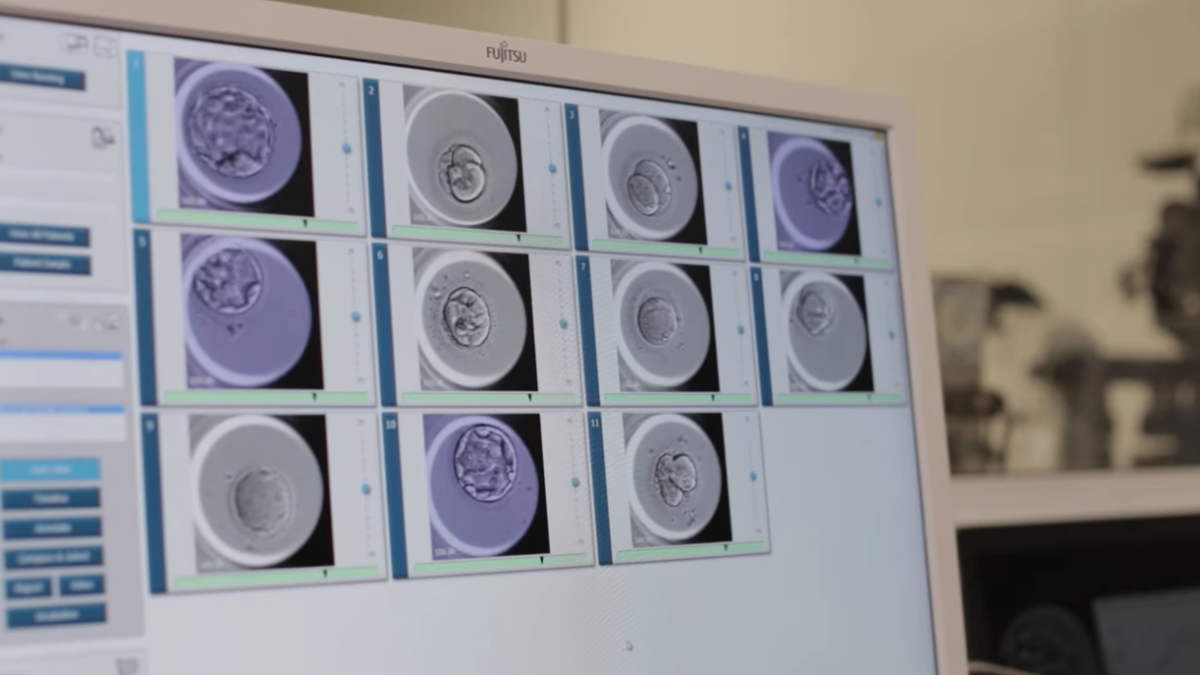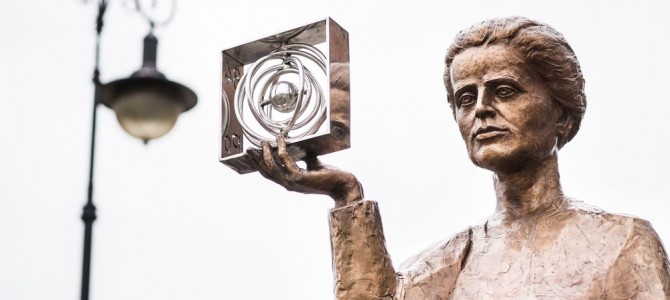
A few months ago, The Telegraph published an editorial by Cristina Odone complaining that girls are pressured to study STEM (science-technology-engineering-mathematics). Besides the discouragement of non-remunerative career choices (mostly to benefit the British Treasury from taxable salaries), she observed feminist-inspired desires for more women to participate in these male-dominated professions.
Libertarian sympathies aside, ignorance of fundamental scientific discoveries and mathematical techniques leaves citizens vulnerable to charlatans (e.g., “renewable” energy acolytes) and dependent on the patience of those who persevered through specialized training. In principle, liberal arts should also engender some humanitarian perspective, but that train left the station long ago.
Nonetheless, men outnumber women in STEM fields, particularly engineering and computer science, despite anxious hand-wringing by pundits and officials. Some suggest this is partly due to the paucity of inspiring forerunners who persevered against sexism to become champions in their studies. (Another is the sink-or-swim mentality that STEM majors often encounter in college. That’s not a bug—it’s a feature.) So, as a public service, enjoy this selection of eight women presented in historical order as pioneers in STEM to inspire a new generation towards interest in these fields. A few may be familiar, but all deserve our recognition.
1. Emilie du Châtelet
First, Emilie du Châtelet (1706-1749) lived as a woman of the Enlightenment. She employed innovative techniques to measure kinetic effects of motion and published papers in philosophy and science. She was born Gabrielle Émilie Le Tonnelier de Breteuil, the only daughter among six children, to a family of lesser nobility. Through her tutors, by age 12 du Châtelet had become fluent in Latin, Italian, Greek, and German, along with her education in mathematics, science, and literature.
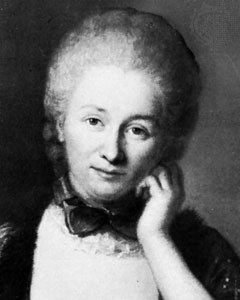
She used her mathematical talent in gambling to purchase books and laboratory equipment. In 1725, she married a French general. They had three children together, the third dying in infancy. In 1733, du Châtelet resumed her mathematical tutorials. She began publishing papers while engaging in a long affair (with the apparent knowledge of her husband) with Voltaire (1694-1778) following his return from exile in England. Her papers included a defense of à priori principles in rebuttal to John Locke (1632-1704) and research into nature of light, heat, and fire.
Her book “Institutions de Physique” (1740) reviewed ideas from leading thinkers as a guide for her son Louis. Du Châtelet turned her attention to distinguish kinetic energy from momentum. She demonstrated and publicized an experiment by Dutch scientist Willem Gravesande (1688-1742) by dropping balls from different heights into a sheet of soft clay. By showing impact displacement as proportional to the square of the velocity, her results supported the vis viva proposition by Gottfried Liebnitz (1646-1716), thereby correcting the famed Isaac Newton (1642-1727).
The documentary “Einstein’s Big Idea” at 54:58-1:07:48 presents a reenactment of these events. (To summarize, kinetic energy equals one-half times mass times velocity squared, whereas momentum equals mass times velocity.) With great effort, she completed her translation with comments of Newton’s “Principia” from the original Latin into French in 1749.
The previous year, she had begun an affair with a poet and became pregnant—a risky condition for eighteenth-century women in their forties. She died from a pulmonary embolism a week after giving birth to a daughter, who also died less than two years later. Sadly, her life ended before she completed her works. Robyn Arianhod provides a brief summary of the life of this remarkable lady.
2. Marie Curie
Second (alright, you’ve heard of her), Marie Curie (1867-1934) painstakingly isolated radioactive elements including radium, together with her husband Pierre Curie (1859-1906). She was the first person to win the Nobel Prize twice in science: 1903 physics and 1911 chemistry.
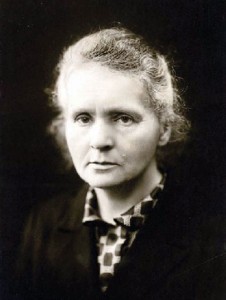
Born Maria Salomea Sklodowska in Warsaw, then in the Kingdom of Poland within the Russian empire, she was the youngest of five children to teachers, whose Polish national sentiments brought financial hardship from Russian authorities. She worked as a governess and tutor in Poland while continuing to study. Maria joined her married sister in Paris by late 1891 and proceeded to study physics, chemistry, and mathematics at the University of Paris, receiving degrees in 1893 and 1894.
In the latter year, Marie (as she became known in France) met Pierre Curie. Pierre received his doctorate in early 1895, and later that year he and Marie were married. They had two daughters: Iréne (1897-1956, Nobel laureate 1935) and Ève (1904-2007, author of “Madam Curie” in 1938). Marie focused on uranium as a radiation source, which induced electric conductivity in the surrounding air.
The Curies chemically isolated radioactive metals from ore in a converted shed at the École Normale. She searched for additional radiation-emitting substances, and in 1898 discovered thorium, polonium, and radium. Marie received her doctorate from the University of Paris in 1903, and later that year shared her first Nobel Prize with her husband and Henri Berquerel (1852-1908).
Tragedy followed in 1906 with the death of Pierre from a road accident. Curie isolated radium in 1910, and during the First World War she served as a radiologist in field hospitals to assist battlefield surgeons, later creating a radiological facility to treat wounds with radon gas. Her health deteriorated from cumulative effects of radiation (recognized in her final years), and she died in 1934 from aplastic anemia caused by bone marrow damage.
During her lifetime, she received numerous honorary degrees, and today several institutions bear her name. Element 96, curium, is named in her honor.
3. Emmy Noether
Third, Emmy Noether (1882-1935) became the master of abstract algebra in mathematics, developing the general theory on commutative rings and discovering the connection between symmetry and conservation in physics known as Noether’s Theorem.
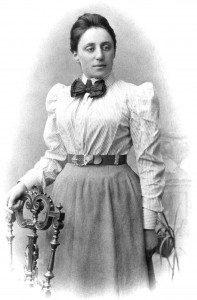
Amalie Emma Noether was born to a Jewish family in Erlangen, north of Nuremberg in Bavaria, the eldest of four children and only daughter of mathematics professor Max Noether. Even by nineteenth-century standards, Wilhelmine Germany was considered exceptionally misogynist, with women excluded from culture and science. Despite these obstacles, she received a doctorate in 1907. Although not permitted to teach, Noether received recognition from her published mathematics articles.
In 1915, she was invited by David Hilbert (1862-1943) and Felix Klein (1849-1925) to join the mathematics department at the University of Göttingen. In a few months, Noether resolved the conservation of energy paradox that had plagued Einstein’s General Theory of Relativity, and in 1919 obtained the rank of Privatdozent. Her discovery correlated conserved quantities in physical laws to a corresponding continuous symmetry. This is explained in “The most beautiful idea in physics” documentary.
Symmetry constitutes similarity following translation—for example, bilateral symmetry means a mirror image along a dividing line or plane. In physics, translational symmetry corresponds to momentum conservation, rotational symmetry corresponds to angular momentum conservation, and time translation symmetry corresponds to energy conservation.
Following these achievements, she developed ascending chain conditions (involving collections of sets) and a theory of ideals in commutative rings (sets in which the sequential order of binary operations leaves the result unchanged—for example, a + b = b + a). Daniel Berlyne published a translation of her 1920 paper. Noether also advanced invariant theory of groups, topology (invariant properties of objects under deformation), hypercomplex numbers, and non-commutative algebra.
Following the Nazi takeover in 1933, Noether was dismissed from the university. Later that year she accepted a position at Bryn Mawr College in Pennsylvania. Sadly, she died only two years later of an embolism following surgery to remove a uterine tumor. Noether is honored by several memorials, including university buildings for mathematics study.
4. Lise Meitner
Fourth, Lise Meitner (1878-1968) together with her nephew Otto Frisch (1904-1979) made a startling discovery in December 1938 (five months after fleeing Germany) that would immediately revolutionize nuclear physics and lead to the atomic bomb.
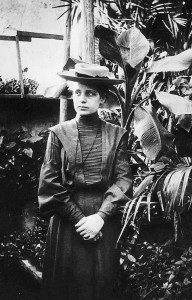
Meitner was born in Vienna to a Jewish family as the third of eight children. Her father was one of the first Jewish lawyers in Austria. Because women were then not permitted to attend public education institutions, Meitner obtained a private education in physics supported by her parents. She passed the Matura examination in 1901, and subsequently received a doctoral degree from the University of Vienna in 1905—the second woman to do so.
She went to Berlin to attend lectures at Wilhelms-Universität by Max Planck (1858-1947)—the first woman to be so permitted—and subsequently became his assistant and discovered several new isotopes with Otto Hahn (1879-1968). Meitner became a Lutheran, and was baptized in 1908. In 1912, she moved to Kaiser-Wilhelm Institute (KWI) near Berlin and was offered a permanent position the following year.
During the First World War, Meitner took charge of X-ray equipment in the Red Cross for the Austrian army. She returned to KWI in 1916 to continue working with Hahn. During this period, they discovered the long-lived isotope protactinium-231, for which in 1924 Meitner received the Silver Leibniz Medal. In 1926, she was appointed as full professor in physics at the University of Berlin—the first woman in Germany so honored. She undertook trans-uranium research together with Hahn, by then the director at KWI.
Since she was of Jewish heritage, she lost her protection as an Austrian national after the Anschluss (in which Germany absorbed Austria) in 1938, and hurriedly fled to the Netherlands. Later, she accepted a post in Stockholm, working with the father of quantum mechanics Niels Bohr (1885-1962), who traveled from Copenhagen. She corresponded with Hahn, who informed her of the puzzling presence of barium after bombarding uranium with neutrons.
Over the Christmas holiday, Meitner and Frisch realized that something previously thought impossible was actually happening: a uranium nucleus had split in two by nuclear fission, based on energy calculations. They quickly published their findings as “Disintegration of Uranium by Neutrons: a New Type of Nuclear Reaction” in Nature. Hahn denied her credit when he received the 1944 Nobel Prize in chemistry.
A reenactment of these events can be seen in the documentary “Einstein’s Big Idea” at 1:23:38-1:45:00. She vehemently refused to work on the Manhattan Project. Meitner became a Swedish citizen in 1949, and reconciled with Hahn in the 1950s. She died in Cambridge at the age of 89. Element 109, meitnerium, is named in her honor. Ruth Lewis Sime recounts her story in “Lise Meitner: A Life in Physics,” published by University of Berkeley Press.
5. Grace Hopper
Fifth, Grace Hopper (1906-1992) created the first compiler for a computer programming language in 1952 and later developed standards, particularly for early programming languages.
Born Grace Brewster Murray in New York City, she was the oldest of three children to parents of Dutch and Scottish descent. After graduating from Vassar in 1928 in mathematics and physics, she earned a master’s degree in 1930 and a PhD in 1934, both at Yale. Murray taught mathematics at Vassar starting in 1931, being promoted to associate professor there in 1941. She married Vincent Hopper (1906-1976) in 1930, keeping her husband’s surname after their divorce in 1945.
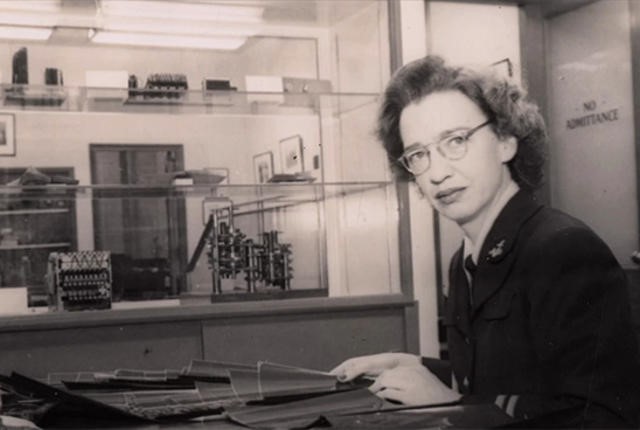
Hopper enlisted with the Navy WAVES (Women Accepted for Volunteer Emergency Service) in 1943. After being commissioned a lieutenant the next year, she was assigned to the Bureau of Ordnance Computation Project at Harvard. She served with professor and Naval Reserve officer Howard Aiken (1900-1973), who was the principal engineer for the Mark I, the first large-scale automatic digital computer in the United States.
Hopper learned to program the Mark I and authored a 500-page manual, later working on the Mark II and Mark III machines. In 1946, Harvard hired Hopper into its faculty as a research fellow. While at Dahlgren, Virginia in 1947, she popularized the term “debugging” upon finding a moth stuck in a Mark II relay. In 1949, she became senior mathematician at Eckert-Mauchley Computer, which was subsequently acquired by Sperry Rand.
While there, Hopper developed the revolutionary concept of a compiler—an intermediate program that converts instructions written in an English-like high-level language into binary code, thereby making it easier for people to create programs with less error. Hopper guided the creation of COBOL, one of the early high-level languages.
After serving 17 years, she retired from the Navy Reserves in 1966. The following year, the Navy recalled “Amazing Grace” to active duty to standardize high-level computing languages, promoting her to commodore in 1983—that rank subsequently renamed rear admiral (lower half). Hopper passed away in 1992 and is buried in Arlington National Cemetery. The Arleigh Burke-class guided-missile destroyer USS Hopper (DDG-70) is commissioned in her honor (launched 1996).
6. Hedy Lamarr
Sixth, Hedy Lamarr (1914-2000) while starring in Hollywood films co-invented with composer George Anthiel (1900-1959) a torpedo guidance technique recognized as an early example of spread-spectrum communication.
Born Hedwig Eva Maria Kesler in Vienna, she starred at 18 in “Ekstase” (1933), which became notorious for her nude scenes. In 1933, she married Friedrich Mandl, a munitions manufacturer who hosted lavish parties for fascist and Nazi officials. Hedwig accompanied her husband on business meetings to meet scientists, thereby introducing her to applied science. She fled for Paris in 1937, fortuitously meeting Luis B. Mayer, and arrived in Hollywood in 1938, debuting in “Algiers” (1938) under her stage name Hedy Lamarr. Married six times over a 32-year period, she adopted one child and bore two.
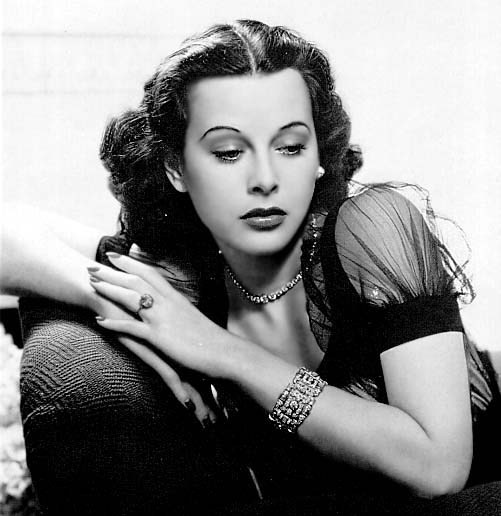
Lamarr appeared in 28 films from 1939 to 1957, including her most famous, “Samson and Delilah” (1949). Eventually, she became bored with acting and shifted her attention to inventions. Her best-known, under her married name Hedy Markey, created a frequency-hopping system with which to guide a radio-controlled torpedo, having learned of this weapon from her first marriage.
By using a piano-roll sequencer, the signal frequency could be shifted across a range of 88 keys (as on a keyboard). This made the enemy unable to jam the control signal, because blanketing the entire radio spectrum required more power than available. It was ahead of its time, and the U.S. Navy did not adopt her technique until 1962 during the Cuban Missile Crisis. Subsequent developments have employed this idea into spread-spectrum communications. As her acting career waned, Lamarr retreated into seclusion, and died in Florida of heart failure at age 85.
7. Roselind Elsie Franklin
Seventh, Roselind Elsie Franklin (1920-1958) refined techniques for isolating and imaging by X-ray diffraction the deoxyribonuclaic acid (DNA) molecule to enable the discovery of its double-helix structure. Her contributions in crystallography for DNA were overlooked during the award of the 1962 Nobel Prize in physiology or medicine, due to her premature death from cancer and personality differences with colleagues.
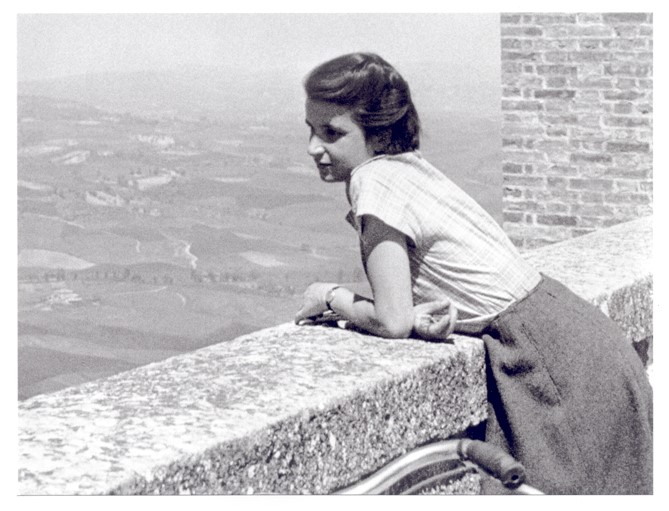
She was born in London to an affluent and supportive Ashkenazi Jewish family, the second of five children. Franklin studied chemistry at Newnham College, Cambridge, and received Second Class Honors in 1941. She conducted research in coal during the Second World War for her PhD thesis. In the late 1940s, she worked in Paris on X-ray crystallography before accepting a position at King’s College, London, in 1950.
Using DNA samples provided to the institution, Franklin skillfully hydrated specimens, and with her colleague Raymond Gosling (1925-2015) discovered two forms: short and fat when dried called the “A” form, and long and thin at high humidity termed the “B” form. Franklin chose the A form while Maurice Wilkins (1916-2004) selected the B form. In mid-1952, Franklin concluded the A form did not demonstrate a helical structure, although the B form was generally accepted as such.
Dissatisfied at King’s College, she arranged for transfer to Birkbeck. Meantime in early 1953, Francis Crick (1916-2004) and James Watson (b. 1928) at Cavendish Laboratory in Cambridge began a DNA structural model, with insight from Franklin’s photograph of the B form. Her findings were published in Nature in April 1953. At Birkbeck, she explored the structure of the tobacco mosaic virus and subsequently discovered that helical protein molecules composed its covering.
Franklin became ill at the end of 1957 and died in April the following year from bronchopneumonia, carcinomatosis, and ovarian cancer.
8. Mildred S. Dresselhaus
Eighth and finally, Mildred S. Dresselhaus (b. 1930) has pioneered electrical bonding research on carbon structural geometric configurations, such as nanotubes. Born in Brooklyn to eastern European immigrants, Mildred Spiewak overcame an environment ill-conducive to academics, partly by her older brother’s tutoring.
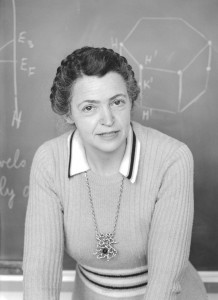
In her second year at Hunter College, Rosalyn Sussman Yalow (1921-2011) encouraged Spiewak to study physics. Spiewak researched superconductor behavior in a magnetic field at the University of Chicago, receiving her PhD and marrying Gene Dresselhaus in 1958. In addition to teaching physics and engineering at MIT while raising four children, Mildred Dresselhaus studied electronic structures of semimetals.
Later, she measured lattice characteristics of graphene by Raman spectroscopy, electron-phonon interaction in carbon nanotubes, and thermoelectric characteristics of fibers and sheets for compact power delivery. Dubbed the Queen of Carbon Science, Dresselhaus is the recipient of the Presidential Medal of Freedom in 2014 and the 2015 IEEE Medal of Honor.
The Value of Science History
Readers might quibble over these choices—what about Ada Lovelace (1815-1852) for computer description, Margaret Knight (1838-1914) as inventor, Sofia Kovalevskaya (1850-1891) as (analysis) mathematician, Rosalyn Sussman Yalow (1921-2011) in endocrinology (and mentor to Dresselhaus), Shirley Ann Jackson (b. 1946) in particle physics, Temple Grandin (b. 1947) in animal husbandry, or Frances Arnold (b. 1956) in biotechnology?
These women also contributed greatly to their fields, as have so many others who deserve recognition. The Awesome Eight were selected, in part, based on their relative fame in the technical community. So, as encouragement for the ladies, find your niche and add your name of accomplishment onto a future exhortation on STEM.
But isn’t STEM hard? Well, yeah. Perhaps STEM can be likened to G. K. Chesterton’s observation about Christianity: it’s “not been tried and found wanting; it has been found difficult and not tried.” STEM offers many rewards, from satisfaction of completing an elegant proof, crafting an efficient design, discovering a beautiful theorem.
True, you’ll run into insensitive jerks (as in any endeavor). Also, you’ll encounter dreaded items named mostly for dead white males: Taylor series, Green’s theorem, l′Hôpital’s rule, Laplace transforms, Bessel functions, Hamiltonian operators, Louis structure, van der Waals force, Snell’s law, Rayleigh scattering, Maxwell’s equations, Bremsstrahlung radiation, Gaussian distribution, Nyquist plots, Peltier effect, Poisson’s ratio, Young’s modulus—all without trigger warnings. And we’ll skip the tragic fate of Schrödinger’s cat. (Those of you for whom this brings back memories, relax. Take a deep breath. It’s okay.)
As the Good Lord reminded us in Matthew 7:14, “narrow is the road that leads to life, and only a few find it.” STEM fields are pearls of great price (Matthew 13:46), human technical advances that enable us to routinely do things our ancestors couldn’t have imagined.
Solutions to hunger and thirst in the world won’t be found by emotional appeals or poetry readings. Such benefits will be seen through improved power generation and applied chemistry. Privacy can be enhanced by better cryptography, using new algorithms, and quantum computers. Medicine expects less invasive therapy through nano-instruments.
STEM isn’t some soulless wasteland devoid of humanity. Rather, STEM elevates us through knowledge and understanding of our universe. It’s tempting to leave such matters to others. Resist that temptation. Learning more about how the Creator presented us with wonders untold is a worthy goal for everyone. Adding to that corpus may be the prerogative of a smaller cohort, but as in the exhortation of Luke 10:2, “the harvest is plentiful, but the workers are few.” That’s your invitation.




